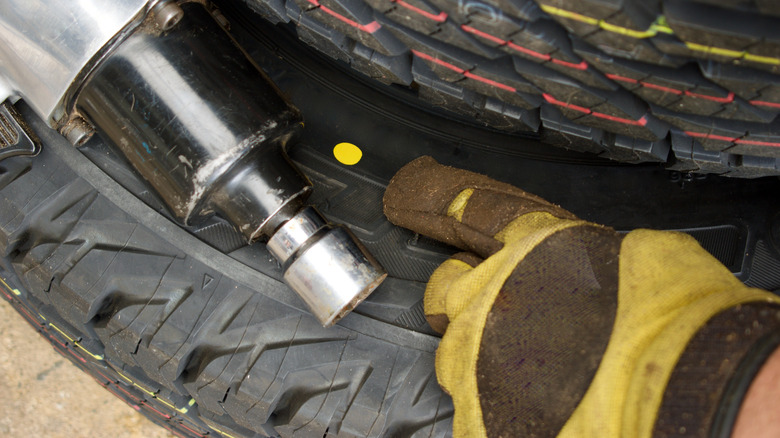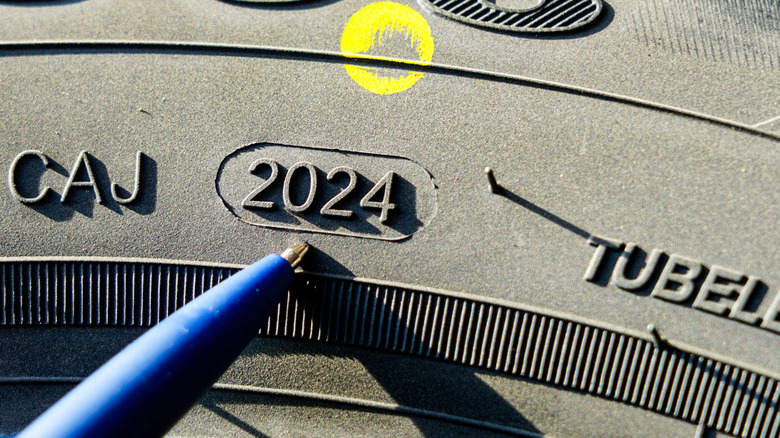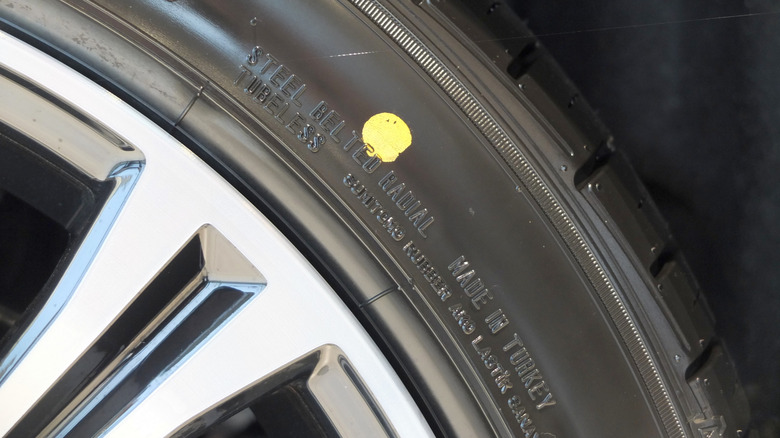Here's Why The Red And Yellow Dots On A Tire's Sidewall Are Important
You have probably seen the tiny red or yellow dots on the side of a brand-new tire and figured they were just part of the packaging, or deemed them as some kind of factory paint. Most people think the same, as these colored spots are the easiest to ignore, and it's hard to believe that something as simple as this little mark can play an important role. But the truth is — those dots actually have a key job when it comes to car balancing.
Believe it or not, those markings matter quite a bit, especially when we talk about a smoother and safer ride. They help with balancing your tires the right way. And if they're ignored, it could mean more vibration on the road, quicker wear on your tread, or even a drop in fuel efficiency. And once you know the right placement for those dots, you will make sure they're always lined up just right before hitting the road.
What do the red and yellow dots mean?
First up, the red dot, which marks the tire's stiffest point. It is also called the maximum radial force variation. Sounds technical, right? But in plain terms, it simply means that this part of the tire resists flexing more than the rest. On the other hand, the yellow dot shows the lightest spot on the tire. Yes, tires aren't perfectly balanced when they come from the factory, and that's exactly what these dots are meant to help with.
Now, here's where it gets a bit technical. The valve stem on your wheel is often the heaviest part, so aligning the yellow dot, which is the lightest point, with the valve stem, the heaviest point, helps balance things out. If the tire has a red dot and the wheel also has a mark indicating its softest point, the red dot takes priority and should be aligned with that spot instead. This is especially important for performance vehicles or if you drive at high speeds often.
Why proper tire alignment makes a big difference
So, what happens if these dots are ignored? In short, your ride suffers. You may notice your steering wheel vibrating or hear odd noises when driving. That's because the tire isn't balanced properly. Although most modern tires are made with impressive precision, they're still not flawless. Thus, proper alignment using these dots means less need for additional wheel weights, smoother rides, and improved fuel efficiency. Not to mention, your tires last longer, and the wear and tear is spread more evenly.
Tire technicians use these markings to get things right before your car even touches the road. Some tires come with just one dot, while others might have both. In those cases, the final placement depends on the type of vehicle, how it's driven, and the driver's preference. And even though not all tires will have both, when they do, it's worth using that to your advantage. The dots simply compensate for small imperfections during the tire-making process.


